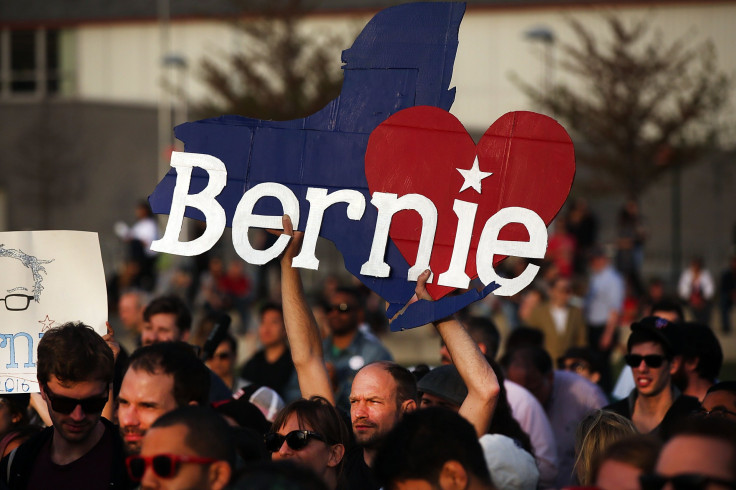Election 2016: Can Working Families Party Make The Difference For Bernie Sanders In New York?

Tuesday's New York primary is a crucial moment for Sen. Bernie Sanders. The left-wing insurgent presidential candidate has won seven of the last eight state contests, but he has yet to erase Hillary Clinton's delegate lead.
Recent polls show Clinton with a double-digit advantage in New York, suggesting that the remarkable Sanders winning streak may soon come to an end. But Sanders has a "secret weapon," as Mother Jones magazine put it: the progressive Working Families Party, which endorsed him in December.
WFP has chapters in several states, but its origin and base is in New York, where party activists have been working to mobilize volunteers, bring in local endorsements and get out the vote for Sanders. It's unclear whether their efforts will be enough to beat the polls. But, crucially, the WFP is strongest in the part of the state where Sanders could use the most help.
If past New York Democratic primaries are any guide, it seems likely that Sanders will perform well in rural upstate counties, especially those bordering Vermont, which he represents in the Senate. But Clinton is likely to do better in New York City. That's a problem for Sanders because the city is where the bulk of the state's Democratic votes will be cast.
In the 2014 Democratic primary, more than half of all votes in the state came from the city's five boroughs, which are also counties. Sanders needs to do at least passably well there if he wants to make a strong showing in New York overall.
Fortunately for him, the city is where the WFP is strongest, as the 2014 general election results indicate. That year, the WFP claimed a higher share of the vote in New York City than it did anywhere else in the state, according to an International Business Times analysis of New York Board of Elections data.
The WFP endorsed incumbent Gov. Andrew Cuomo in 2014, so he was listed as the candidate for governor on both the Democratic Party's ballot line and the WFP's. That year, the WFP gubernatorial ballot line picked up 3.22 percent of the vote statewide. But in New York City, the party won 5.74 percent of the vote, and did even better in two of the city's five counties. In Kings County (Brooklyn), the WFP picked up 7.05 percent of the vote; in New York County (Manhattan), the party pulled in 8.29 percent.
This suggests that the city, Brooklyn and Manhattan in particular, may be where you can find the highest concentration of WFP supporters overall. The question is whether their activism can put much of a dent in the city's voting behavior. Lawrence Levy, executive dean for Hofstra University's National Center for Suburban Studies in Hempstead, Long Island, told IBT he's a skeptic.
"It's likely to be pretty localized," said Levy. "There's a handful of congressional districts where they can make a difference. Hillary Clinton will win New York City and most suburban districts by a wide margin."
© Copyright IBTimes 2024. All rights reserved.






















